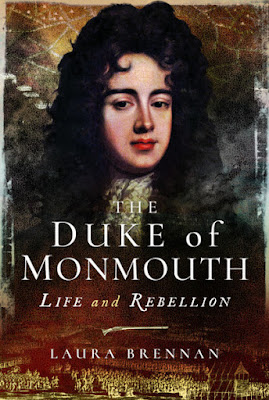Portrayal of the Battle of Sedgemoor in 'Lorna Doone'
From R.D.Blackmore's classic novel of Exmoor
Would that I had never been there! Often in the lonely hours, even now it haunts me;would far more, that the piteous thing had never been done in England. John Ridd, Volume III Chapter XII of 'Lorna Doone'
R.D Blackmore's 'Lorna Doone' (1869) is the most well known novel to feature the Battle of Sedgemoor, well the immediate aftermath at least. In the whole of the novel's 700 pages, there is little about the Rebellion. Monmouth is referred to almost in passing Judge Jeffreys appears for a few pages as Lord Chief Justice in 1683. And not every filmed version of the novel even includes the Battle of Sedgemoor scene, though the 2000/2001 film version depicts it well.
The lead male character in 'Lorna Doone' , John Ridd, refuses to take part in the Monmouth Rebellion and vehemently tries to discourage local people from supporting the uprising. At the very end of June 1685 John Ridd goes searching for his brother in law to try to encourage him to desert the Rebels. Ridd hears the sounds of battle as the fighting comes to a close. ( Volume 3, Chapter XII)
To hear the sounds of raging fight, and yells of raving slayers, and the howls of poor men stricken hard, and shattered from wrath to wailing; then suddenly dead low hush, as of a soul departing, and spirits kneeling over it
Only to arrive during the aftermath of Sedgemoor.
Flying men, flung back from dreams of victory and honour, only glad to have the luck of life and limbs to fly with, mud-bedraggled, foul with slime,reeking both with sweat and blood, which they could not stop to wipe,cursing, with their pumped-out lungs, every stick that hindered them, or gory puddle that slipped the step scarcely able to leap over the corses that had dragged to die. And see how the corses lay; some as fair as death in sleep;with the smile of placid valour, and of noble manhood, yet hovering on the silent lips. These had bloodless hands put upwards, white as wax, and firm as death, clasped ( as on a monument) in prayer for dear ones left behind .....
(Corses- corpses)
The depiction of the battle dead is poignant enough without being extended over more paragraphs and pages. The reader senses that humanity is reached the depths of cruelty.It is as if R.D. Blackmore could see no value in the struggle against the Crown, nearly 200 years before he was writing.
John Ridd soon gets caught by Kirk's Lambs and who treat him as a rebel. Ridd proceeds to wrestle several members in a bid to win his freedom, winning each time. However the Royalist forces decide to execute him anyway. Ridd does not face a firing squad with any degree of heroism. At the last minute he is reprieved by a Royalist captain whose life he saved in an early skirmish with the notorious outlaw band, The Doones. Though Ridd despises the harshness of the sentences imposed during the Bloody Assizes, he later establishes a cordial relationship with James II and Mary of Modena, and they later reward Ridd with honours and his own coat of arms. A strange almost unreal separation takes place between the benign James II and the vicious retribution carried out in his name by Judge Jeffreys.
The Doones- though nominally portrayed as outlaw 'papists' side with Monmouth, though for very opportunist motives. Picking the wrong side leads to their downfall. Six members of the Doones get executed in the Bloody Assizes, and imposition of Royal authority in the region leads to a final assault on their fortified settlement and the end of the terror that they have levied on the region. The failure of the Monmouth Rebellion leads to order and lawful authority being restored. There is no indication on offer that the region,or elsewhere in the country is anything but tranquil on the eve of William of Orange's landing at Torbay on 5th November 1688.
Other blogs by Michael Bully
A Burnt Ship literature, drama, and poetry relating to 17th century warfare



Comments
Post a Comment